|
Charles Loring Brace, a young Presbyterian minister with a big heart, was deeply distressed at the plight of the tens of thousands of abandoned children who roamed the streets of New York City in the early 1850s. Brace saw them everywhere. To stay alive, they had to beg and steal. In even the coldest weather, they had to sleep outdoors. Some of the street children were orphans. Others had been turned out by parents too poor to feed them. Or they had become lost in the vast city, or had run away because of abuse. Many were the children of immigrants and had no other family in this country. Brace was determined to do something. He raised money and started the Children’s Aid Society (CAS) to assist homeless children. While he started several beneficial programs for them, mostly he wanted to find them families—ones that would nurture, protect, and love them. Small town and farm folks would be best, he reasoned. He felt they were goodhearted and would be touched by the children’s plight and want to help. The child they took would help with chores and field work, just as all children did at that time. Could such a plan work? He decided to find out. So began what was soon known as the orphan trains. CAS assumed guardianship of orphans and children whose families couldn’t—or wouldn’t—care for them. Many lived in CAS facilities for months, growing strong and ready for travel. Then, in groups averaging 25 to 50, the children boarded trains dressed in new clothing, hair neatly trimmed, and bibles in hand. Posters went up in small towns along the tracks, announcing when the children would arrive. When they did, they were lined up, looked over, and matched with interested families. Whenever possible, CAS agents traveling with the children placed siblings together or near each other. They also tried to follow up on every placement, moving children to new homes if there were problems. Between 1854 and 1930, a quarter-million children made this journey in search of families to call their own. Sometimes they were taken only to be laborers or were never truly loved or accepted. But for most it worked well, and for some it worked splendidly. Said one rider who found a happy home at the end of the ride, “My life began when I got off that train.”
0 Comments
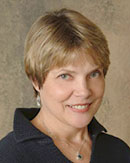 Buffalo Bill was the ultimate showman, the superstar of the fabled Wild West show that toured America, Europe, and Russia for forty years. He was so famous that he performed for the queen of England and was friends with several American presidents. But who was the person behind that celebrated name? He was born William Frederick Cody in 1846 and called Billy. When he was eight, his family moved to Kansas Territory to become homesteaders. Kansas was in turmoil over the issue of joining the Union as a free or a slave state. Billy’s father, who opposed slavery, was stabbed by a pro-slaver. He died three years later from his injury, leaving eleven-year-old Billy, the eldest son, to support his mother and six siblings. Jobs were scarce, but Billy was already an expert horseman and a hard worker. A freight company paid him a man’s wages to work on supply wagons headed west. When he was just fourteen, he rode the Pony Express. He learned to be a trapper, trail guide, scout, and fine marksman. These dangerous jobs allowed him to care for his family while doing work he loved. When the Civil War started in 1861, seventeen-year-old Billy enlisted, becoming a Union soldier, scout, and spy. After the war he worked as a civilian guide for the army, fought in the Indian Wars, and earned the nickname Buffalo Bill from Kansas railroad workers amazed by his skill in downing buffalo to provide meat for them. He used that name when he created a show about the Old West that he loved so much—and which was fast disappearing. His show debuted in 1883 and was immediately successful. It featured sharpshooter Annie Oakley, hundreds of Native Americans, trick riders, cowboys and cowgirls, a runaway stagecoach, buffalo, and horses galore. People loved it, and Bill grew famous. So who was he? A showman, yes, but also a generous philanthropist, a conservationist of western lands, and a supporter of women’s rights. When necessary, he fought Native Americans, but also befriended them. He paid them fairly and brought them recognition and dignity by featuring them in his show. Above all, he was always Billy Cody, a brave boy who cared for his family and fought for his country, a boy who loved the West and brought it to life for millions of enthralled viewers around the world. He was truly an American icon. 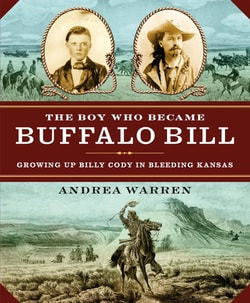 To learn more about Buffalo Bill’s childhood, you’ll want to read Andrea Warren’s newest book, The Boy Who Became Buffalo Bill: Growing Up Billy Cody in Bleeding Kansas. Learn more about all her books at AndreaWarren.com. ____________________________________________ Andrea Warren is a member of iNK's Authors on Call and is available for classroom programs through Field Trip Zoom, a terrific technology that requires only a computer, wifi, and a webcam. Click here to find out more. 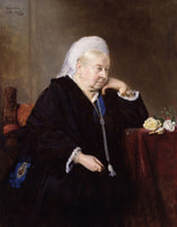 Victoria, still in her widow's garb at age 80. Victoria, still in her widow's garb at age 80. When eighteen-year-old Victoria was crowned queen of England in 1837, the British wondered and worried who their very young queen would marry. Whoever he was, he would have power and influence, so the queen’s choice was critical. Victoria had many royal suitors and was getting advice from all directions about which alliance with which suitor would be most advantageous for England. But as the British quickly learned, their new queen had a mind of her own, and she had already picked Prince Albert of Saxe-Coberg, an area of what is now Bavaria, Germany. The British were shocked! Royalty often intermarried, so it wasn’t because Victoria and Albert were first cousins—her mother and his father were sister and brother—but because there was a great deal of anti-German sentiment in England at the time. Victoria didn’t care. He was her “dear Albert” and they were married in 1840 when they were both twenty-one. They loved each other and were determined that theirs would be a happy marriage. The odds were against this. Neither Albert nor Victoria had grown up in happy families—in fact, both had been exposed to mostly miserable marriages—and Victoria was spoiled, stubborn, and had a quick temper. Fortunately, Albert was a kind man who understood her well and knew how to be patient with her. That patience was put to the test many times as they raised their nine children. Victoria disliked being pregnant and wasn’t fond of babies and toddlers. But Albert provided balance. He doted on their four sons and five daughters and was closely involved in their care and education. The British public adored the royal family, and they came to love the scholarly Albert. He became a British citizen, was a wise political advisor to Victoria, and was active in public life. When he died from stomach problems in 1861 at age forty-two, the British grieved for him. Victoria went into deep mourning. Often called “the widow of Windsor,” she wore only black and lived a secluded life at Windsor Castle until her own death at age eighty-one. Today, her name and Albert’s grace London’s great Victoria and Albert Museum, known affectionately as the V&A. London is also home to several major public monuments that were commissioned by Victoria to honor her “dear Albert” and which serve as a reminder that theirs was truly a royal love story. 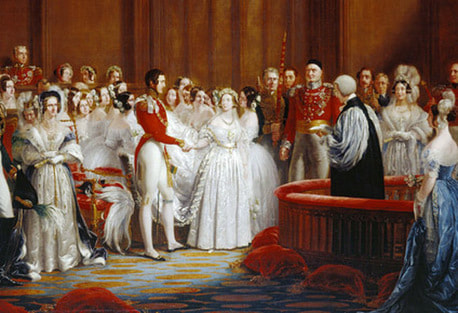 Marriage of Victoria and Albert Painting by George Hayter It has been said that Queen Victoria started a bridal custom of wearing a white wedding gown. Prior to that time royal brides wore elaborate dresses made especially for the occasion from gold or silver fabric sometimes embroidered with silken threads and embellished with semi-precious stones to show their wealthy status. Ordinary brides of the working class wore their “best dress” usually made in a dark and durable material. 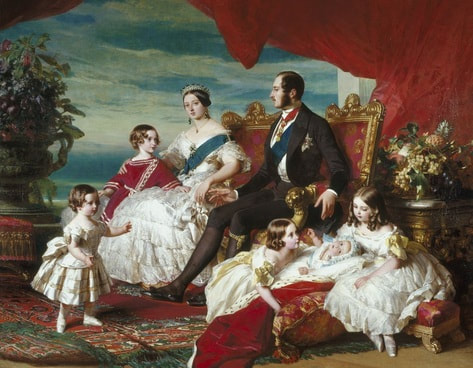 Prince Albert and Queen Victoria with five of their children. The Prince Consort (26 August 1819 – 14 December 1861), lived long enough to see only one of his children married and two of his grandchildren born , while Queen Victoria (24 May 1819 – 22 January 1901) lived long enough to see not only all her grandchildren, but many of her 87 great-grandchildren as well. 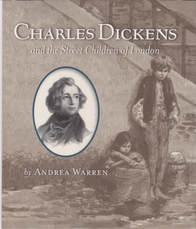 Queen Victoria and Charles Dickens were acquaintances and she was a huge fan of his books. You can read more about the Victorian age in Andrea Warren's book Charles Dickens and the Street Children of London. For more information, visit her website. Andrea Warren is a member of iNK's Authors on Call and is available for classroom programs through Field Trip Zoom, a terrific technology that requires only a computer, wifi, and a webcam. Click here to find out more. MLA 8 Citation
Warren, Andrea. "Victoria and Albert: The Royals Who Married for Love." Nonfiction Minute, iNK Think Tank, 26 Jan. 2018, www.nonfictionminute.org/the-nonfiction-minute/ victoria-and-albert-the-royals-who-married-for-love. Incoming shell! Whenever ten-year-old Lucy McRae heard that distinctive sound, she froze, allowing the explosive to fly on over her. Then she hurried into the safety of the family’s cave. It was 1863 and Vicksburg, Mississippi, was being bombarded by Union artillery. It was located strategically on the Mississippi River. All along the waterfront, Confederate cannon prevented Union ships from taking control of the river and using it to invade the South. President Lincoln said that for the North to win the war, those cannons must be silenced. He selected General Ulysses Grant to force Vicksburg to surrender. Grant’s army sieged the city of 5,000, cutting off food supplies and fresh water. Then he rained shells day and night on the Confederate troops defending Vicksburg and on its terrified civilians. But townspeople had no intention of giving up. Most of their men were off fighting, but those remaining were stalwart: there would be no surrender. Instead, they dug more than 500 caves into the sides of Vicksburg’s many hills, where they took refuge. Everyone lived side by side, rich and poor, masters and slaves. Cooking tents were set up outside the entrances, and during lulls in shelling, residents hastily prepared whatever food they had. Lucy always stayed outside until the moment shelling started again. The caves were hot, dark, dank, and crowded, and were home to spiders, scorpions, lizards, mosquitoes, and snakes. “It was living like tree roots,” one woman said. People brought in rugs, bedding, books and favorite artwork to make their surroundings more tolerable. Sometimes there were close calls when a shell hit a cave. Once Lucy was buried under a mound of sliding dirt for several minutes. When her frantic mother pulled her out, she gasped for air, her mouth and nose full of dirt. Although the town was severely damaged by the shelling, because of the caves only a dozen people died in the forty-seven-day siege. Townspeople wanted to hold out, but daily rations of water and food were almost gone, forcing the city’ surrender on July 4, 1863. The South’s loss of Vicksburg helped the North win the war. But the bravery of townspeople like Lucy, who held fast in the face of overwhelming odds, was never in dispute.
Howard Pyle painting of terrorized people spotting a rocket shell. Photo of a cave entrance after the siege., Note the unexploded shells. 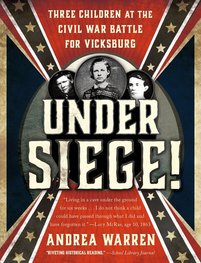 If you’d like to know more about the Siege of Vicksburg, Andrea Warren tells the whole story of Lucy and other children caught up in that dramatic event in her award-winning book Under Siege! Three Children at the Civil War Battle for Vicksburg. For more on her books, visit her website at AndreaWarren.com. Andrea Warren is a member of Authors on Call. Here's a link to her interactive video conference: What Children Experienced in the Civil War: Three Young People at the Siege of Vicksburg. (Note to teachers: you may have to register at CILC to reach this website. It's free and it's a GREAT resource). MLA 8 Citation
Warren, Andrea. "Living in Caves to Survive the Siege of Vicksburg." Nonfiction Minute, iNK Think Tank, 3 Jan. 2018, www.nonfictionminute.org/Living-in-Caves-to-Survive-the-Siege-of-Vicksburg. 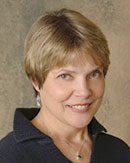 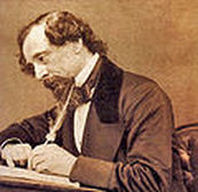 In 1843, thirty-one-year-old Charles Dickens had money problems. His wife was expecting their sixth child, he was in debt, and he supported a slew of needy relatives. He was known for long novels that were published in weekly installments, but because time was of the essence, he decided to write a short story (actually a long story by our standards, but short by his) that he could publish quickly. The British were enamored with the paranormal, so he decided it would be a ghost story. To increase interest, he included THREE ghosts. And to seal the deal, he added a bonus apparition that appeared at the stroke of midnight, dragging its chains from hell. That would get readers’ attention. He didn’t intend to simply entertain them. He was Charles Dickens, after all, and his writing was also meant to inspire. His family had once been poor, and his quest, as always, was to help the less fortunate. The tale he crafted happened at Christmas, a holiday that in England included charitable giving—the perfect setting for his message that charity must come from the heart, and that it’s never too late for redemption. From his fertile imagination he conjured up Ebenezer Scrooge, “a squeezing, wrenching, grasping, clutching, covetous, old sinner!” whose refrain to anything distasteful was “Bah, Humbug!” Scrooge represented the self-serving upper classes, while his poorly paid clerk, Bob Cratchit, and his family, including sickly Tiny Tim, represent the deserving poor. Dickens sent Scrooge on a wild night’s journey, led by the ghosts of Christmases past, present, and future. Scrooge visited his childhood and learned why he’d become such a miserable miser, and he saw a grim future awaiting him if he didn’t change his ways. By sunrise Christmas morning he was a new man: his hard heart had melted and he became a good friend to the poor, beginning with the Cratchit family. He resolved to “honor Christmas in my heart, and try to keep it all the year.” To Dickens’ delight, his readers did the same. In example after example, A Christmas Carol inspired the upper classes to be more charitable to the lower classes. And because the book became a bestseller, it eased Dickens’ financial worries. Dickens’ ghost story remains popular today, reminding us all that it’s never too late to do the right thing, and allowing us to proclaim with Tiny Tim, “God Bless Us, Every One!” 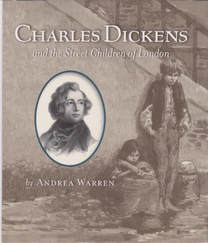 You can learn more about Charles Dickens and his stories in Andrea Warren’s book Charles Dickens and the Street Children of London and on her website. Andrea Warren is a member of iNK's Authors on Call and is available for classroom programs through Field Trip Zoom, a terrific technology that requires only a computer, wifi, and a webcam. Click here to find out more. MLA 8 Citation
Warren, Andrea. "Dickens' A Christmas Carol: How a Short Story with a Big Message Helped the Poor." Nonfiction Minute, iNK Think Tank, 12 Dec. 2017, www.nonfictionminute.org/Dickens-a-christmas-carol. |
*NEWS
|
For Vicki Cobb's BLOG (nonfiction book reviews, info on education, more), click here: Vicki's Blog
The NCSS-CBC Notable Social Studies Committee is pleased to inform you
that 30 People Who Changed the World has been selected for Notable Social Studies Trade Books for Young People 2018, a cooperative project of the National Council for the Social Studies (NCSS) & the Children’s Book Council
Categories
All
Abolitionists
Adams Janus
Adaptation
Adaptations
Adkins Jan
Advertising
Aerodynamics
Africa
African American History
African Americans
Africa West
Agriculture
Aircraft
Air Pilots
Air Pressure
Air Travel
Albee Sarah
Alchemy
Alligators
Allusion
American History
American Icons
Amphibians
Amundsen Roald
Anatomy
Ancient
Ancient Cultures
Anderson Marian 1897-1993
Animal Behavior
Animal Experimentation
Animal Intelligence
Animals
Animation
Antarctica
Ants
Apache Indians
Apes
April Fool's Day
Architecture
Argument
Arithmetic
Art
Art Deco
Artists
Arts
Asia
Astronauts
Astronomy
Athletes
Atomic Theory
Audubon Societies
Authors
Autobiography
Automobiles
Aviation
Awards
Bacteria
Baseball
Battuta Ibn
Bears
Beatles
Beavers
Bees
Biodegradation
Biography
Biology
Biomes
Biomimicry
Biplanes
Birds
Black Death
Black History
Blindness
Blizzards
Bombs
Bonaparte Napoleon
Boone Daniel
Botany
Brazil
Bridges
Brill Marlene Targ
Brooklyn Bridge
Brown John
Buffaloes
Building Materials
Butterflies
Caesar
Caesar Julius
Caissons
Calculus
Calendars
Cannibal
Capitals
Caravaggio
Carbon Dioxide
Carnivores
Carson Mary Kay
Cartoons & Comics
Carving (Decorative Arts)
Cascade Range
Castaldo Nancy
Castles
Castrovilla Selene
Cathedrals
Cats
Caves
Celts
Cemeteries
Chemistry
Children's Authors
Child Welfare
China
Choctaw Indians
Christmas
Chronometers
Cicadas
Cinco De Mayo
Ciphers
Circle
Citizenship
Civil Rights
Civil Rights Movements
Civil War
Civil War - US
Climate
Climate Change
Clocks And Watches
Clouds
Cobb Vicki
COBOL (Computer Language)
Code And Cipher Stories
Collard III Sneed B.
Collectors And Collecting
Color
Commerce
Communication
Competition
Compilers
Composers
Computers
Congressional Gold Medal
Consitution
Contests
Contraltos
Coolidge Calvin
Cooling
Corms
Corn
Counterfeiters
Covid-19
Crocodiles
Cryptography
Culture
Darwin Charles
Declaration Of Independence
Decomposition
Decompression Sickness
Deep-sea Animals
Deer
De Medici Catherine
Design
Detectives
Dickens Charles
Disasters
Discrimination
Diseases
Disney Walt
DNA
Dogs
Dollar
Dolphins
Douglass Frederick 1818-1895
Droughts
Dr. Suess
Dunphy Madeleine
Ear
Earth
Earthquakes
Ecology
Economics
Ecosystem
Edison Thomas A
Education
Egypt
Eiffel-gustave-18321923
Eiffel-tower
Einstein-albert
Elephants
Elk
Emancipationproclamation
Endangered Species
Endangered-species
Energy
Engineering
England
Englishlanguage-arts
Entomology
Environmental-protection
Environmental-science
Equinox
Erie-canal
Etymology
Europe
European-history
Evolution
Experiments
Explorers
Explosions
Exports
Extinction
Extinction-biology
Eye
Fairs
Fawkes-guy
Federalgovernment
Film
Fires
Fishes
Flight
Floods
Flowers
Flute
Food
Food-chains
Foodpreservation
Foodsupply
Food-supply
Football
Forceandenergy
Force-and-energy
Forensicscienceandmedicine
Forensic Science And Medicine
Fossils
Foundlings
France
Francoprussian-war
Freedom
Freedomofspeech
French-revolution
Friction
Frogs
Frontier
Frontier-and-pioneer-life
Frozenfoods
Fugitiveslaves
Fultonrobert
Galapagos-islands
Galleys
Gametheory
Gaudi-antoni-18521926
Gender
Generals
Genes
Genetics
Geography
Geology
Geometry
Geysers
Ghosts
Giraffe
Glaciers
Glaucoma
Gliders-aeronautics
Global-warming
Gods-goddesses
Gold-mines-and-mining
Government
Grant-ulysses-s
Grasshoppers
Gravity
Great-britain
Great-depression
Greece
Greek-letters
Greenberg Jan
Hair
Halloween
Handel-george-frederic
Harness Cheryl
Harrison-john-16931776
Health-wellness
Hearing
Hearing-aids
Hearst-william-randolph
Henry-iv-king-of-england
Herbivores
Hip Hop
History
History-19th-century
History-france
History-world
Hitler-adolph
Hoaxes
Holidays
Hollihan Kerrie Logan
Homestead-law
Hopper-grace
Horses
Hot Air Balloons
Hot-air-balloons
Housing
Huguenots
Human Body
Hurricanes
Ice
Icebergs
Illustration
Imagery
Imhotep
Imperialism
Indian-code-talkers
Indonesia
Industrialization
Industrial-revolution
Inquisition
Insects
Insulation
Intelligence
Interstatecommerce
Interviewing
Inventions
Inventors
Irrational-numbers
Irrigation
Islands
Jacksonandrew
Jazz
Jeffersonthomas
Jefferson-thomas
Jemisonmae
Jenkins-steve
Jet-stream
Johnsonlyndonb
Jokes
Journalism
Keeling-charles-d
Kennedyjohnf
Kenya
Kidnapping
Kingmartinlutherjr19291968
Kingmartinlutherjr19291968d6528702d6
Kings-and-rulers
Kings Queens
Kings-queens
Koala
Labor
Labor Policy
Lafayette Marie Joseph Paul Yves Roch Gilbert Du Motier Marquis De 17571834
Landscapes
Languages-and-culture
Law-enforcement
Layfayette
Levers
Levinson Cynthia
Lewis And Clark Expedition (1804-1806)
Lewis Edmonia
Liberty
Lift (Aerodynamics)
Light
Lindbergh Charles
Liszt Franz
Literary Devices
Literature
Lizards
Longitude
Louis XIV King Of France
Lumber
Lunar Calendar
Lynching
Macaws
Madison-dolley
Madison-james
Madison-james
Mammals
Maneta-norman
Maneta-norman
Marathon-greece
Marine-biology
Marine-biology
Marines
Marsupials
Martial-arts
Marx-trish
Mass
Massachusetts-maritime-academy
Mass-media
Mastodons
Mathematics
May-day
Mcclafferty-carla-killough
Mcclafferty-carla-killough
Mckinley-william
Measurement
Mechanics
Media-literacy
Media-literacy
Medicine
Memoir
Memorial-day
Metaphor
Meteorology
Mexico
Mickey-mouse
Microscopy
Middle-west
Migration
Military
Miners
Mississippi
Molasses
Monarchy
Monsters
Montgomery
Montgomery-bus-boycott-19551956
Montgomery-heather-l
Monuments
Moon
Moran-thomas
Morsecode
Morsesamuel
Moss-marissa
Moss-marissa
Motion
Motion-pictures
Mummies
Munro-roxie
Munro-roxie
Musclestrength
Museums
Music
Muslims
Mythologygreek
Nanofibers
Nanotechnology
Nathan-amy
Nathan-amy
Nationalfootballleague
Nationalparksandreserves
Nativeamericans
Native-americans
Native-americans
Naturalhistory
Naturalists
Nature
Nauticalcharts
Nauticalinstruments
Navajoindians
Navigation
Navy
Ncaafootball
Nervoussystem
Newdeal19331939
Newman-aline
Newman-aline
Newton-isaac
New-york-city
Nobelprizewinners
Nomads
Nonfictionnarrative
Nutrition
Nylon
Nymphs-insects
Oaths Of Office
Occupations
Ocean
Ocean-liners
Olympics
Omnivores
Optics
Origami
Origin
Orphans
Ottomanempire
Painters
Painting
Paleontology
Pandemic
Paper-airplanes
Parksrosa19132005
Parrots
Passiveresistance
Patent Dorothy Hinshaw
Peerreview
Penguins
Persistence
Personalnarrative
Personification
Pets
Photography
Physics
Pi
Pigeons
Pilots
Pinkertonallan
Pirates
Plague
Plains
Plainsindians
Planets
Plantbreeding
Plants
Plastics
Poaching
Poetry
Poisons
Poland
Police
Political-parties
Pollen
Pollution
Polo-marco
Populism
Portraits
Predation
Predators
Presidentialmedaloffreedom
Presidents
Prey
Prey-predators
Prey-predators
Prime-meridian
Pringle Laurence
Prohibition
Proteins
Protestandsocialmovements
Protestants
Protestsongs
Punishment
Pyramids
Questioning
Radio
Railroad
Rainforests
Rappaport-doreen
Ratio
Reading
Realism
Recipes
Recycling
Refrigerators
Reich-susanna
Religion
Renaissance
Reproduction
Reptiles
Reservoirs
Rheumatoidarthritis
Rhythm-and-blues-music
Rice
Rivers
Roaringtwenties
Roosevelteleanor
Rooseveltfranklind
Roosevelt-franklin-d
Roosevelt-theodore
Running
Russia
Safety
Sanitation
Schwartz David M
Science
Scientificmethod
Scientists
Scottrobert
Sculpture
Sculpturegardens
Sea-level
Seals
Seals-animals
Secretariesofstate
Secretservice
Seeds
Segregation
Segregationineducation
Sensessensation
September11terroristattacks2001
Seuss
Sextant
Shackletonernest
Shawneeindians
Ships
Shortstories
Silkworms
Simple-machines
Singers
Siy Alexandra
Slavery
Smuggling
Snakes
Socialchange
Social-change
Socialjustice
Social-justice
Socialstudies
Social-studies
Social-studies
Sodhouses
Solarsystem
Sound
Southeast-asia
Soybean
Space Travelers
Spain
Speech
Speed
Spiders
Spies
Spiritualssongs
Sports
Sports-history
Sports-science
Spring
Squirrels
Statue-of-liberty
STEM
Storms
Strategy
Sugar
Sumatra
Summer
Superbowl
Surgery
Survival
Swanson-jennifer
Swinburne Stephen R.
Synthetic-drugs
Taiwan
Tardigrada
Tasmania
Tasmanian Devil
Tasmanian-devil
Technology
Tecumsehshawneechief
Telegraph-wireless
Temperature
Tennis
Terrorism
Thomas Peggy
Thompson Laurie Ann
Time
Titanic
Tombs
Tortoises
Towle Sarah
Transcontinental-flights
Transportation
Travel
Trees
Trung Sisters Rebellion
Tundra
Turnips
Turtles
Typhoons
Underground Railroad
Us-environmental-protection-agency
Us History
Us-history
Ushistoryrevolution
Us History Revolution
Us-history-war-of-1812
Us Presidents
Ussupremecourtlandmarkcases
Vacations
Vaccines
Vangoghvincent
Vegetables
Venom
Vietnam
Viruses
Visual-literacy
Volcanoes
Voting-rghts
War
Warne-kate
Warren Andrea
Washington-dc
Washington George
Water
Water-currents
Wax-figures
Weapons
Weather
Weatherford Carole Boston
Whiting Jim
Wildfires
Winds
Windsor-castle
Wolves
Woman In History
Women
Women Airforce Service Pilots
Women-airforce-service-pilots
Womeninhistory
Women In History
Women-in-science
Women's History
Womens-roles-through-history
Wonder
Woodson-carter-godwin-18751950
World-war-i
World War Ii
World-war-ii
Wright Brothers
Writing
Writing-skills
Wwi
Xrays
Yellowstone-national-park
Zaunders Bo
ArchivesMarch 2021
February 2021
January 2021
December 2020
November 2020
October 2020
September 2020
June 2020
May 2020
April 2020
March 2020
February 2020
January 2020
December 2019
October 2019
September 2019
August 2019
July 2019
May 2019
April 2019
March 2019
February 2019
January 2019
December 2018
November 2018
September 2018
June 2018
May 2018
April 2018
March 2018
February 2018
January 2018
December 2017
November 2017
October 2017
September 2017
March 2017
The NONFICTION MINUTE, Authors on Call, and. the iNK Books & Media Store are divisions of iNK THINK TANK INC.
a 501 (c) (3) nonprofit corporation. To return to the iNK Think Tank landing page click the icon or the link below. :
http://inkthinktank.org/
For more information or support, contact thoughts@inkthinktank.org
For Privacy Policy, go to
Privacy Policy
© COPYRIGHT the Nonfiction Minute 2020.
ALL RIGHTS RESERVED.
This site uses cookies to personalize your experience, analyze site usage, and offer tailored promotions. www.youronlinechoices.eu
Remind me later
Archives
March 2023
February 2023
January 2023
December 2022
November 2022
October 2022
September 2022
June 2022
May 2022
April 2022
March 2022
February 2022
January 2022
December 2021
November 2021
September 2021
April 2021
March 2021
February 2021
November 2020
October 2020
September 2020
June 2020
May 2020
April 2020
March 2020
February 2020
January 2020
October 2019
August 2019
July 2019
May 2019
April 2019
December 2018
September 2018
June 2018
May 2018
March 2018
February 2018
January 2018
December 2017
November 2017
October 2017
September 2017

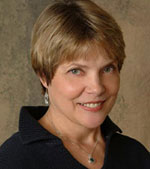


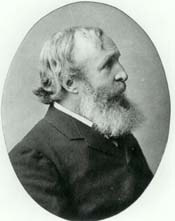
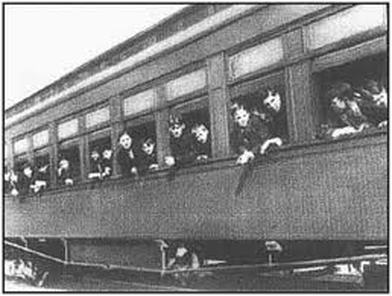
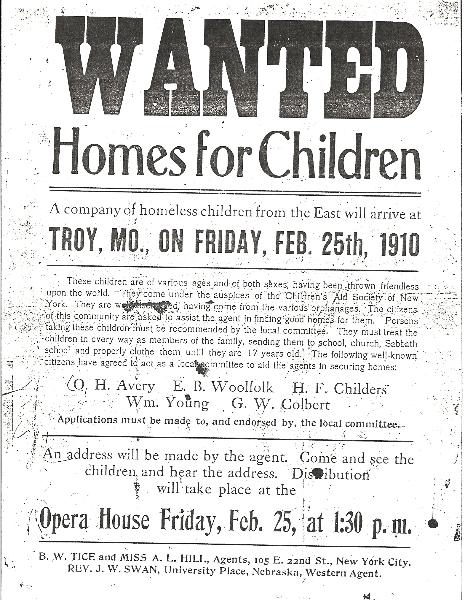
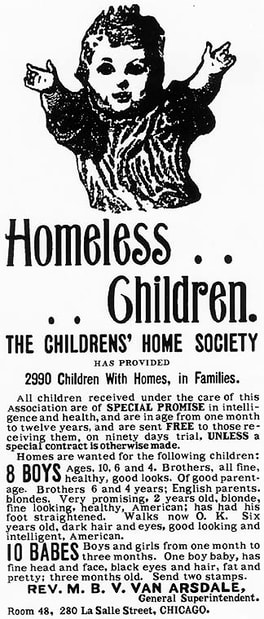
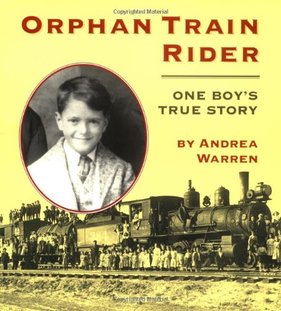
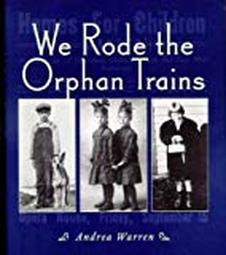
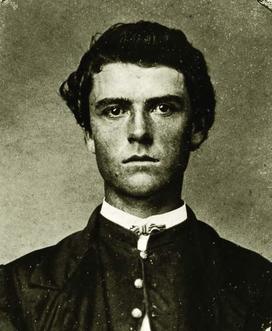
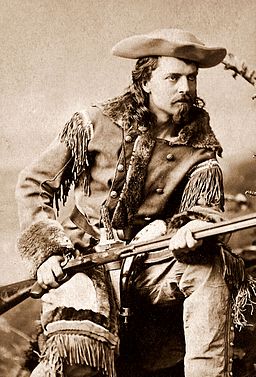
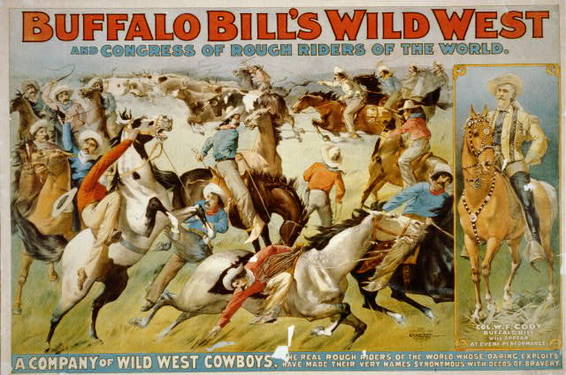
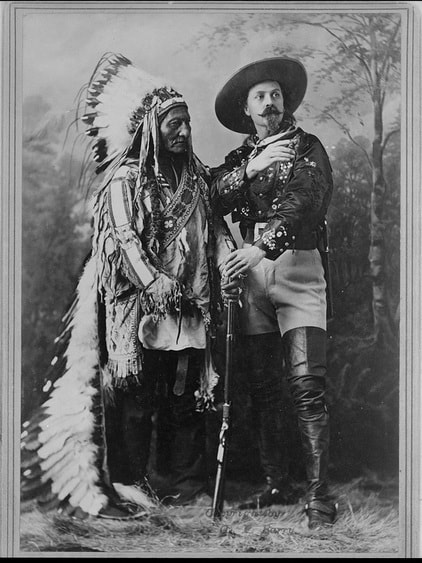


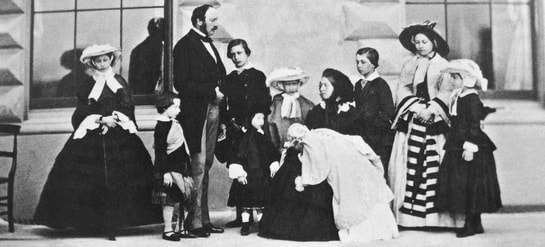

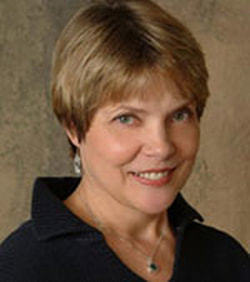

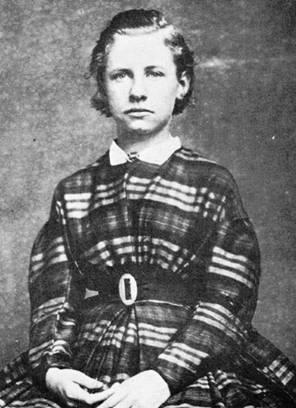
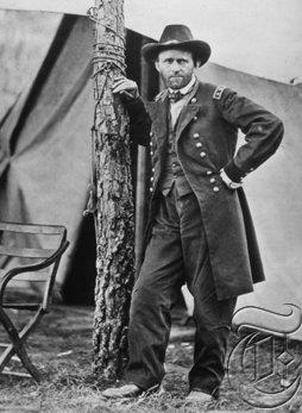
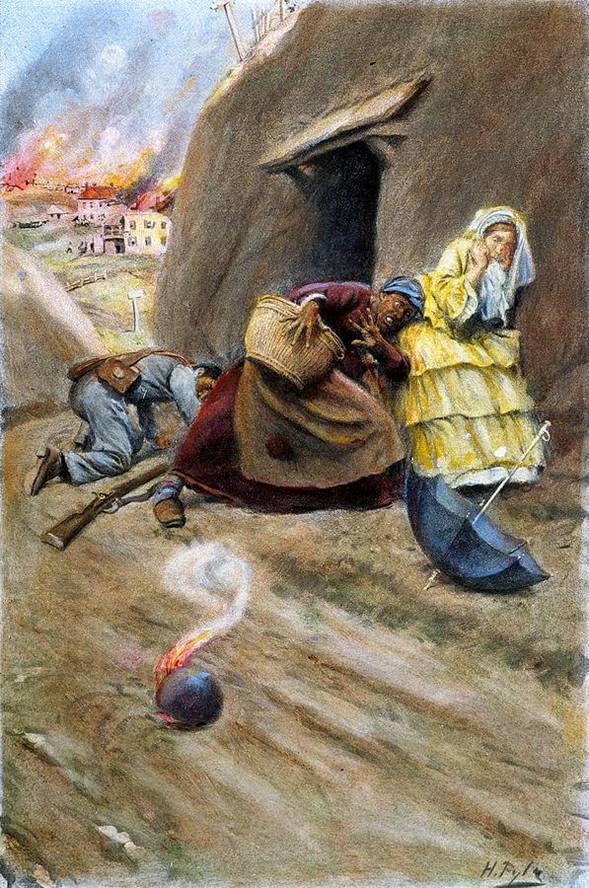
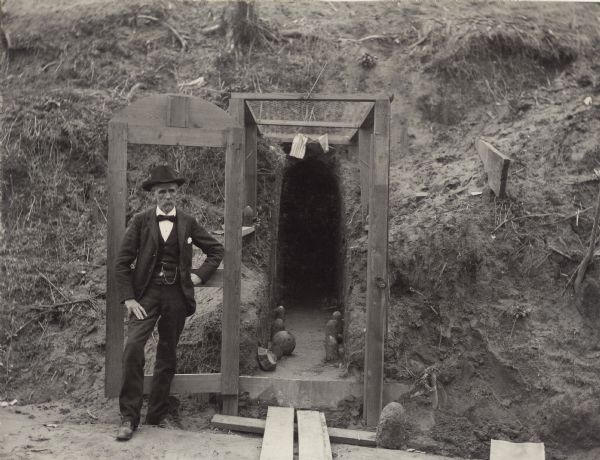


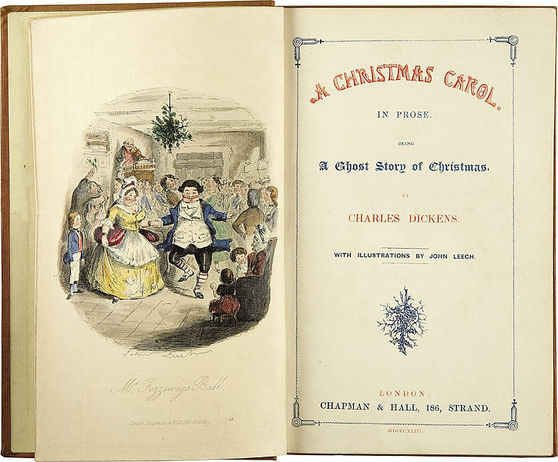
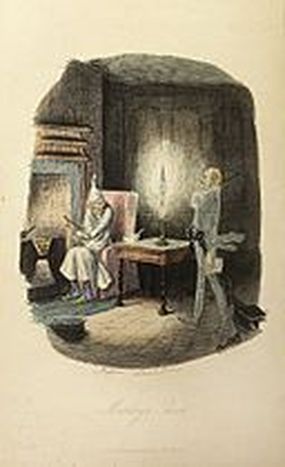
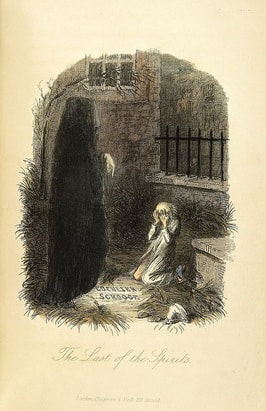

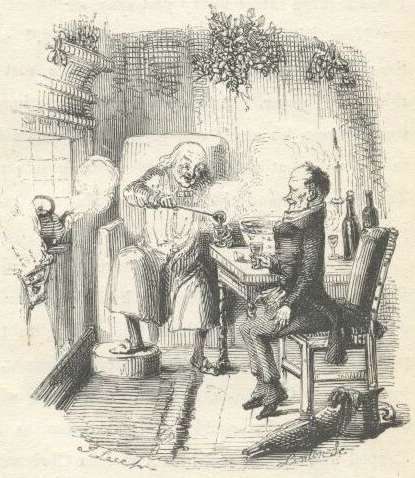
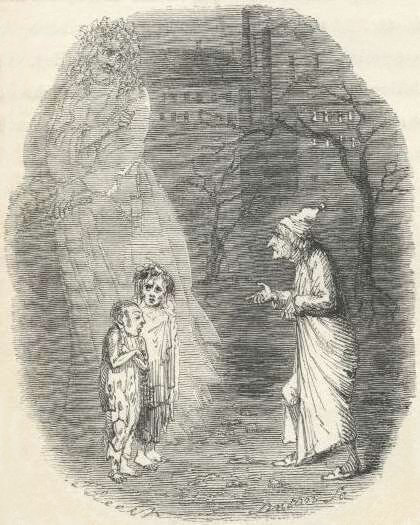

 RSS Feed
RSS Feed
